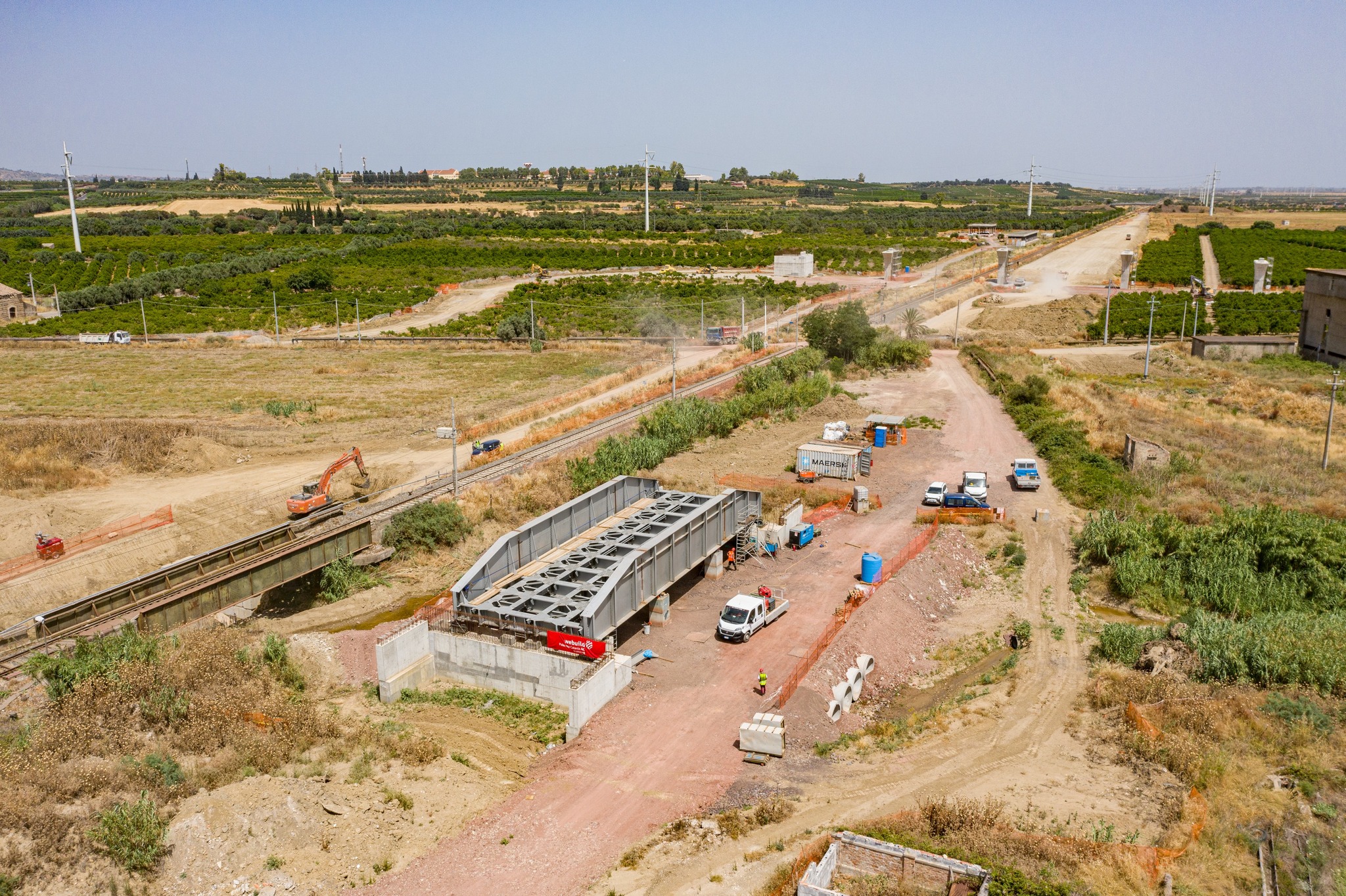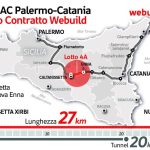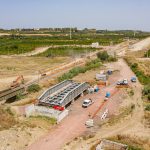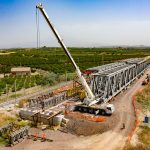 A consortium of Webuild (75%) and Ghella (25%) won a EUR 1.2 billion contract to upgrade the Caltanissetta Xirbi – Nuova Enna rail line (Lot 4A) of the Palermo – Catania – Messina railway in Sicily.
A consortium of Webuild (75%) and Ghella (25%) won a EUR 1.2 billion contract to upgrade the Caltanissetta Xirbi – Nuova Enna rail line (Lot 4A) of the Palermo – Catania – Messina railway in Sicily.
The contract covering the design and construction of 27 km is commissioned by Rete Ferroviaria Italiana (RFI) and financed by the National Recovery and Resilience Plan (PNRR in Italian).
The Lot 4a project covers a new rail next to the existing one, including four tunnels totalling 20 km of tunnels, of which 90% excavated by tunnel-boring machines. Three kilometres of the line will be across viaducts. The project also envisages the renewal of the Caltanissetta Xirbi station and the construction of the movement point of Villarosa.
The work will be done by Webuild (leader), with SELI Overseas (Webuild Group), Ghella and TunnelPro (Ghella Group).
According to FS Italiane, the works on the Caltanissetta Xirbi – Nuova Enna rail section are expected to be completed in October 2026.
With this contract, Webuild is involved in five lots or sections of the Palermo – Catania – Messina corridor for a combined value of approximately EUR 3.6 billion. The other sections are the Bicocca – Catenanuova and Nuova Enna – Dittaino lots between Palermo and Catania, and the Taormina -Giampilieri and Fiumefreddo – Taormina/Letojanni lots between Catania and Messina. Work on these five lots is estimated to create up to 4,300 direct and indirect jobs, with the direct involvement of more than 580 direct suppliers, half of which from southern Italy and the islands.
The 223 km Palermo – Catania railway is part of the Scandinavian -Mediterranean Corridor and once modernisation is completed, travel time between Palermo and Catania will be reduced by 60 minutes, from 3 hours to two hours. The project is split into several sections which, apart the Lot 4A, includes:
Lot 1+2: Fiumetorto – Lercara Diramazione (30 km). In December 2022, RFI launched the tender for the project estimated at EUR 1.5 billion with construction works at all sites to start in 2023. The project involves the construction of a 30 km double track of which 20 km in tunnels, the new Cerda station and the development of Lercara Diramazione station. This project is expected to be completed in 2029. In March excavation started on the 15.4 km Fiumefreddo – Taormina/Letojanni section.
Lot 3: Lercara Diramazione – Caltanissetta Xirbi (47 km) with works expected to be completed in 2026;
Lot 4 totalling 42 km: Caltanissetta Xirbi – Enna Nuova Lot 4a (27 km) and Enna Nuova – Dittaino Lot 4b (15 km), expected to be completed in 2026. The consortium of Webuild and Impresa Pizzarotti was awarded a EUR 616 million contract for works on the Lot 4a.
Lot 5: Dittaino – Catenanuova (22 km) expected to be completed in 2026.
Catenanuova – Bicocca (37.5 km) section which is expected to enter operation in 2026.
The project also covers the Catania Junction involving the Catania Acquicella – Bicocca underground section and the underground central station and the construction of the double track between Catania central station and Catania Acquicella station. The doubling of Fiumefreddo – Giampilieri track is also part of the project and works for these two last projects are expected to be completed in 2030.
The upgrade of Palermo – Catania railway line is estimated at EUR 11.2 billion. In March 2023, the European Commission announced its commitment for the modernisation of the line providing EUR 3.4 billion financing for the modernisation of 178 km between Fiumetorto and Bicocca. In September 2022, a EUR 101 million co-financing has been approved through the European Regional Development Fund (ERDF) for upgrade works on the Palermo – Messina line.
The project to modernise the Palermo – Catania railway line is part of FS Italiane strategy to improve rail transport access in South Italy for which a EUR 21 billion investment is planned for the modernisation of the infrastructure and deploying digital technology. The planned interventions will improve the interconnections with the internal areas of Sicily and will allow the increase in the capacity of passenger and freight trains on the line increasing the standards of regularity and punctuality of the trains.
Share on:






